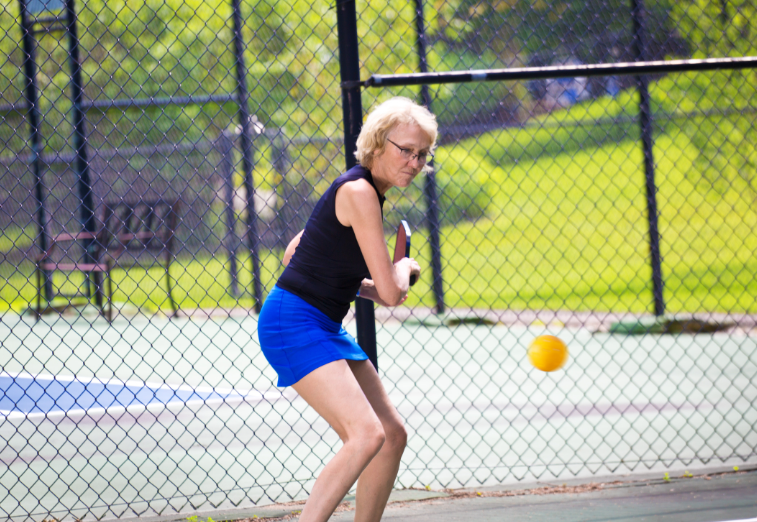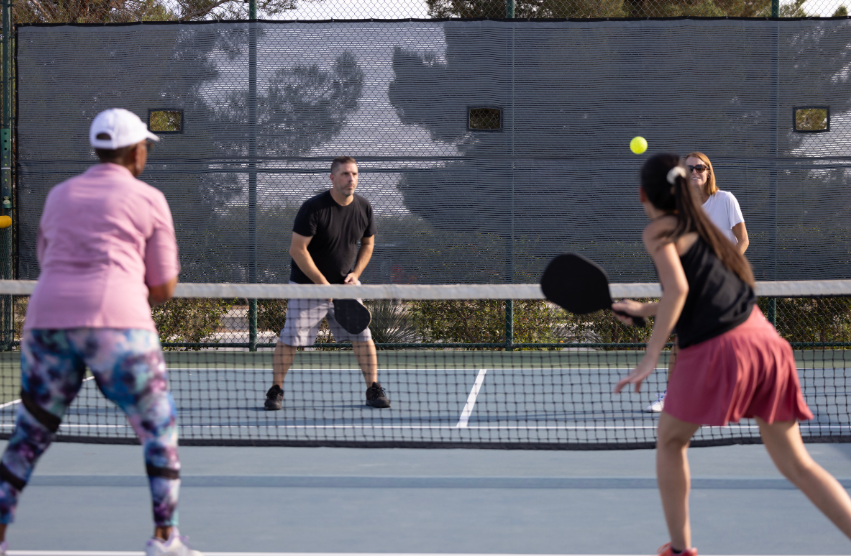I remember the day my friend Emily suggested that we try something new for our weekly workout. She had discovered this sport called pickleball, a combination of tennis, badminton, and table tennis. It sounded fun and quirky, so we decided to give it a shot. Little did we know that it would be an incredibly challenging experience for us to learn the rules of this seemingly simple game.
The first time we stepped onto the pickleball court, I couldn’t help but feel a mixture of excitement and intimidation. The court was smaller than a tennis court, and the net was set lower, which I thought would make it easier for us to play. I could already imagine us smashing the ball back and forth, breaking a sweat, and having a great time. But reality had other plans.
We decided to do some research before we started, so we pulled up a website on our phones to learn the basic rules of pickleball. We figured it wouldn’t take long, and we’d be playing in no time. We couldn’t have been more wrong. The rules were unlike any sport we’d ever played before, and there were so many of them!
The game is played with a perforated plastic ball, resembling a whiffle ball, and a paddle that’s larger than a ping pong paddle but smaller than a tennis racquet. The serving rules alone had us scratching our heads. We learned that the server has to serve diagonally across the court, and the ball must bounce once in the receiving team’s service box before it can be returned. That seemed simple enough, but then we discovered the double bounce rule: each team must let the ball bounce once on their side before hitting it. The ball must be served underhand, and the server’s feet must stay behind the back line during the serve. We didn’t realize that something so simple as serving would have so many stipulations.
But the real kicker was the “non-volley zone,” also known as the kitchen. This is a 7-foot wide area on either side of the net, and players are not allowed to hit the ball in the air (volley) while standing within this zone. If a player does volley the ball from within the kitchen, their team loses the point. We found this rule particularly difficult to remember and abide by, often accidentally stepping into the kitchen during play.
As we started playing, Emily and I had a hard time keeping track of all the rules. There were countless times when we would serve incorrectly, step into the kitchen accidentally, or forget about the double bounce rule. We would laugh at our mistakes and high-five each other, acknowledging that we were in this learning experience together. It was frustrating, but at the same time, we couldn’t help but have fun as we tried to figure it all out.
After a few weeks of playing, we started to get the hang of it. Our serves were more consistent, and we were finally able to remember to stay out of the kitchen. But even then, we still struggled with some of the more nuanced rules of the game. We found it particularly challenging to understand the scoring system, as it was different from any other sport we’d played. In pickleball, only the serving team can score points, and the game is typically played to 11, with a two-point lead required to win. Each player on a team serves until they lose a point, and then the other team gets their chance to serve.
Our inability to remember the rules led to some amusing moments. One day, as Emily and I were playing against two other women who were also beginners, we had a disagreement about who was supposed to serve. We all stood there, laughing and trying to remember whose turn it was, while the other players on adjacent courts looked at us in bewilderment.
In another instance, we found ourselves constantly mixing up the rules of pickleball with those of tennis. We’d accidentally play out of bounds or hit the ball on a bounce when we shouldn’t have. Despite our confusion, our opponents were always patient and understanding, as they too were learning the ins and outs of this unique sport.
We also struggled with the concept of stacking, a more advanced strategy that involves changing positions with your partner to optimize court coverage and confuse opponents. Emily and I attempted to implement stacking a few times, but it usually resulted in us running into each other, or worse, leaving a wide-open space on the court for our opponents to easily score points.
Despite our challenges, we found the pickleball community to be incredibly welcoming and supportive. There were always more experienced players willing to offer advice, explain the rules, and help us improve our game. This encouragement made our learning process more enjoyable and less intimidating.
One day, while Emily and I were taking a break from playing, we met an older woman named Susan who had been playing pickleball for several years. She told us that when she first started, she also struggled with the rules and even considered giving up. But she persevered, and now she loved the game more than ever. Susan’s story inspired us to keep pushing through our struggles, knowing that it would all be worth it in the end.
Over time, our understanding of the rules improved, and our gameplay became more fluid. We were no longer the clumsy newbies, constantly making mistakes and apologizing to our opponents. Instead, we became more confident players, able to hold our own on the court.
As the weeks turned into months, Emily and I found ourselves looking forward to our pickleball sessions more and more. The challenges we faced in learning the rules had brought us closer together, and we had formed new friendships with other players in the community. The sense of accomplishment we felt as we finally grasped the rules and strategies of the game was incredibly rewarding, making our initial struggles worth every moment.
In the end, our journey into the world of pickleball taught us that sometimes, the most rewarding experiences come from pushing through challenges and embracing the learning process. We may have stumbled through the rules and made countless mistakes, but with perseverance, support from our fellow players, and a healthy dose of laughter, we discovered a sport that brought us joy, friendship, and a newfound sense of accomplishment.
As the seasons changed, so did our pickleball skills. Emily and I found ourselves participating in local tournaments, something we would have never imagined when we first started playing. The competitive atmosphere was thrilling, and we were able to put our knowledge of the rules to the test against more experienced players.
We also discovered that pickleball was a fantastic way to stay active and healthy. The fast-paced nature of the game provided us with a full-body workout, helping us build strength, agility, and endurance. The sport also sharpened our mental acuity, as we had to stay focused and make quick decisions during gameplay.
Not only did our physical and mental fitness improve, but we also found that pickleball brought a sense of balance to our lives. It allowed us to escape the stress of our daily routines and provided us with a fun and engaging outlet to unwind. We found ourselves more relaxed, happier, and better equipped to handle life’s challenges.
As our love for the sport grew, we started introducing pickleball to our friends and family. Many of them, initially skeptical, soon became hooked on the game as well. We organized group outings, where we would all get together, play some friendly matches, and enjoy each other’s company. These gatherings not only deepened our existing relationships but also introduced us to even more people who shared our passion for the sport.
Looking back on our journey, I am grateful for the day Emily suggested we try pickleball. What started as a simple suggestion turned into a transformative experience, filled with personal growth, camaraderie, and countless memorable moments. We had our fair share of struggles learning the rules, but those challenges only made our eventual success even sweeter.
Our pickleball adventure taught us valuable lessons about perseverance, friendship, and embracing the unknown. It reminded us that sometimes, the most rewarding experiences in life come from pushing past our comfort zones and trying something new. And while we may have been initially daunted by the rules and complexities of the game, we ultimately discovered a lifelong passion that enriched our lives in ways we never could have imagined.






